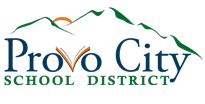Last modified: December 5, 2023
Policy 3401 P2 Wellness: Physical Activity Guidelines
Physical activity directly impacts the level of fitness for students as well as adults. This policy is meant to increase students’ and teachers’ awareness of the need to be physically active and to encourage a healthy lifestyle that includes productive movement. The lack of such an understanding fosters a sedentary lifestyle that contributes to obesity and a lack of cardiovascular fitness that influence overall wellness.
Elementary Schools shall:
- Implement the Physical Education Core Curriculum in each elementary school.
- Principals are encouraged to provide a minimum of 60 minutes per week of structured physical education classes for all full-day students or 30 minutes per week for half-day students throughout the school year. The committee recommends that PE classes for kindergarten through second grade not exceed 30 minutes per session.
- Encourage teachers, para-professionals and supervisors to provide physical activity options during recess. The teaching of safety, rules, and sportsmanship is important.
- Include one 20 minute recess in addition to lunch recess each day.
- Consider altering school schedules to allow for recess before lunch.
- Establish recess as an important time of day for children and teachers and not as a time for remediation.
- Assure that loss of recess or PE class will not be used as a punishment. However, principals are expected to restrict an individual student’s recess time when necessary as an intervention to ensure student safety.
- Promote and support student involvement in Provo City Recreation, organized teams, and physical athletic activities.
- Establish safe routes to encourage students to walk or bicycle to and from school.
Secondary Schools shall:
- Implement the Physical Education Core Curriculum in each secondary school. (Assure that all physical educators are familiar with and are teaching to the state core.)
- Aim for daily physical education instruction and activity for each secondary student with a goal of 225 minutes per week. (This could be accomplished at school or at home.)
- Prioritize instruction emphasizing lifelong physical fitness. (Promote gross motor activity, knowledge, skills and sportsmanship.)
- Encourage intramural sports and fitness activities for all students as a complement to formal athletic and physical education programs.
- Establish safe routes to encourage students to walk or bicycle to and from school.
Use of Reductive Consequences in Managing Student Misbehavior
(Suggested Alternatives to Taking Away Recess as a Consequence for Misbehavior)
Use of reductive consequences is an essential component in managing student misbehavior. However, reductive consequences should only be a minor part of any staff member’s interventions. Positive interactions and positive behavior supports should be the main focus when intervening in student misbehavior. For example, it is recommended that all PCSD staff maintain a 4:1 ratio of positive to corrective interactions with students. In other words, for every corrective interaction/reductive consequence given to a student, teachers should have four interactions recognizing or reinforcing the behavior we want increased. Indeed, reductive consequences are much more effective when built on a foundation of positive interactions.
Because of the District’s emphasis on love of learning, it is encouraged that teachers look for opportunities for intrinsic, student-initiated motivation as opposed to rewards and punishments.
Reductive consequences should be used sparingly and in an effective manner. To increase the effectiveness of reductive consequences, consider the following guidelines.
When using reductive consequences, use something:
- That has meaning to the child;
- Over which you have control; and
- Which you are willing to take away.
Additionally, follow these 3 rules regarding consequences: Effective consequences:
- Should be related to the behavior as much as possible;
- Should take place as soon after the misbehavior as possible; and
- Should be relatively small and short term.
Examples of Other Reductive Consequence
- If a student is tapping an object on his desk and it cannot be ignored, remove the object from the student for two minutes.
- Loss of 30 seconds of free time for each instance of not following teacher directions (use of kitchen-type timer recommended).
- Give a verbal redirect for being off task.
- Place student in seat away from peers for 5 minutes for talking to neighbors.
- Ignore a student’s blurted out answer and call on those who have raised their hand to answer.
- Require student to line up at the back of the line.
- Loss of preferred item.
- Loss of point or removal of tickets.
- Loss of computer time.
- Level drop.
- Call home to caretaker.
Adopted
September 10, 2013
Revised: July 2016
Adopted
June 10, 2014; August 11, 2015; August 9, 2016
Policy and Procedures
Policy 3401 P1 Wellness: Vending Machine Guidelines
